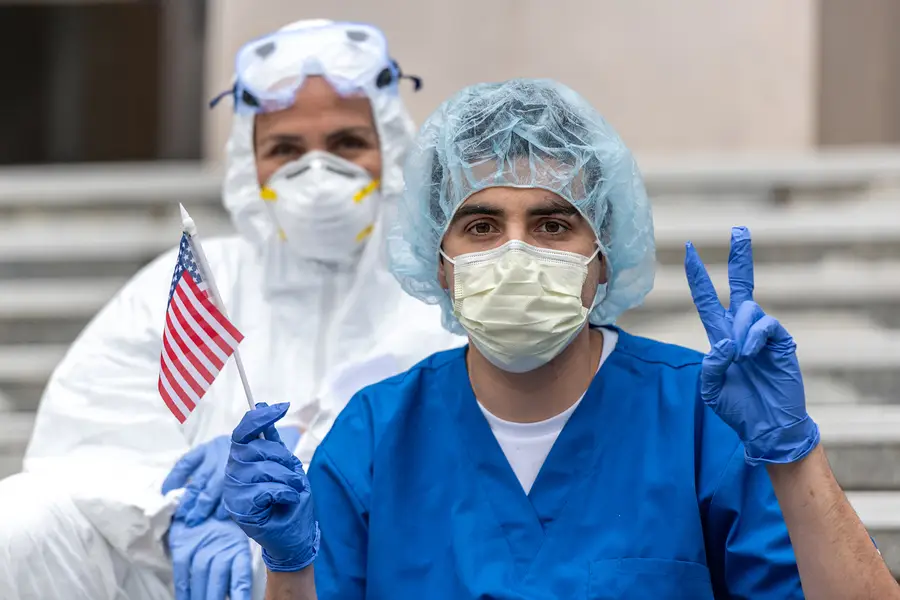
The global pandemic of COVID 19, the disease caused by the novel coronavirus, has placed enormous pressure on the world’s economy and, in particular, the health care systems of affected countries. As of May 2020, a mere four months after COVID 19 was first detected in Snohomish County, Washington, total confirmed cases in the United States had exceeded 1.7 million, and more than 100,000 of those individuals did not recover. Further complicating matters, public health efforts to stem the rate of new infections have left businesses shuttered and millions of Americans newly unemployed.
While the challenges of this situation are numerous, many in the U.S. face an additional hurdle. Nearly half of all Americans receive health insurance coverage from their employers. While it is currently unknown how many of the newly unemployed have lost coverage because of the pandemic, the number is likely not trivial. Recent reporting suggests that over 33 million Americans have lost their jobs during the pandemic.
COVID-19 Pandemic Highlights Healthcare System Vulnerability
There is a tragic twist of irony to this situation—a global pandemic is arguably when access to health care is the most essential. Health systems are struggling to treat the massive influx of COVID-19 patients, while also caring for those affected by non-communicable diseases. In addition, health care providers are facing increasing financial pressure due to the pandemic and providing care to the uninsured will no doubt compound this strain. The Commerce Department estimates that there was a reduction in “elective” health care spending due to COVID-19, contributing to a staggering 18-percent drop in overall health care spending. While the U.S. government has allocated funding for COVID-19 testing for those without health insurance, the cost of treatment for those who test positive can be considerable. Although Congress has set aside emergency funds for hospitals, COVID-19 costs for the uninsured are not specifically covered by current legislation.
In the midst of this crisis, the U.S. presidential election draws near. A contentious topic of debate among politicians has been how to support the millions of Americans who go uninsured or underinsured each year. Some have advocated for strengthening the private insurance market and the subsidies provided by the Affordable Care Act. A colleague of ours previously wrote about the potential of this approach in the context of both the uninsured and the rise of the gig economy. Others have proposed expansions of federally funded health insurance coverage ranging from a public option to “Medicare for All.” “Medicare for All” in particular has received considerable attention due to its far reaching implications for patients, providers, and payers alike. Regardless of the approach, however, this crisis has underscored the risks and the costs of the coverage gap.
Any reform of the U.S. health care system, which constitutes nearly 18 percent of the economy, would no doubt face significant opposition. Under normal circumstances, passing such legislation would be a monumental challenge. Yet the global pandemic and the rash of newly uninsured may present an opportunity. While COVID-19 costs for the uninsured are not explicitly covered by current legislation, it is reasonable to expect this population’s care will ultimately be subsidized by the federal government. How the government approaches this task will have important implications for the health outcomes of uninsured COVID patients and the total cost to taxpayers.
While policymakers should certainly consider the (likely significant) cost of any reform, the COVID-19 pandemic is an important reminder that there can be a significant cost associated with doing nothing. The inefficiencies driven by the country’s high uninsured and underinsured rates are likely compounded in the time of a public health crisis. For example, even prior to the current pandemic, medical bills were a significant contributor to household debt. In addition to the financial uncertainty this brings for patients, hospitals and other providers face uncertainty in terms of how much of the care they provide will be paid for. One conservative estimate (in that it assumes uninsured rates prior to the pandemic, which will no doubt increase) projects that the cost of COVID-19 treatment for the uninsured could reach $41.8 billion, or over 40 percent of the $100 billion allocated for hospitals by the CARES act.
Public Support for Healthcare Reform Increases During COVID-19
A comprehensive health care reform presents an opportunity to provide both care and financial certainty to the uninsured, including those impacted by COVID-19. Still, major barriers to reform exist. Prior to the pandemic, public support for the Affordable Care Act was estimated to be near its highest level, and Medicare for All and a public option also enjoyed majority support. No major reforms were passed in this context, and it remains unclear whether the clinical and economic challenges presented by the COVID-19 pandemic will change that landscape in a meaningful way.
Although it is too early to draw conclusions, indications are that support may be increasing with the pandemic. One recent poll found that 41 percent of Americans say the COVID-19 pandemic makes them more likely to support government-mandated health care. It is possible that the perception of the pandemic as a temporary emergency will temper policymakers’ appetite for more comprehensive reforms. However, the pandemic has also exacerbated systemic issues that existed long before COVID-19. Could this be the nudge the U.S. health care system needs to embrace major change? Only time will tell.


